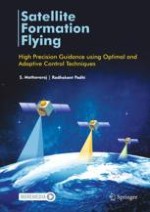2021 | OriginalPaper | Buchkapitel
5. Adaptive Dynamic Inversion for Satellite Formation Flying
verfasst von : S. Mathavaraj, Radhakant Padhi
Erschienen in: Satellite Formation Flying
Verlag: Springer Singapore
Aktivieren Sie unsere intelligente Suche, um passende Fachinhalte oder Patente zu finden.
Wählen Sie Textabschnitte aus um mit Künstlicher Intelligenz passenden Patente zu finden. powered by
Markieren Sie Textabschnitte, um KI-gestützt weitere passende Inhalte zu finden. powered by
